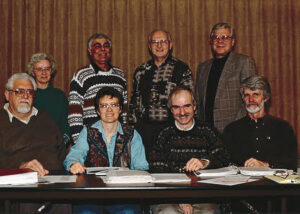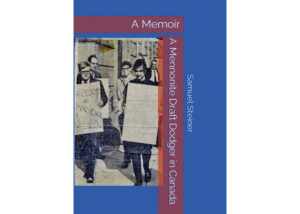Professionals in the field of journalism have sometimes called their news content the “first draft of history.” News reporting pulls together facts—who, what, where, when, why, how—capturing an event, a moment in time. Sometimes the reporting is accompanied by analysis, sometimes by opinion. But the news gathering, and its dissemination, generally happens in a relatively short time period.
I was reminded of this while watching the online presentation of this year’s Benjamin Eby Lecture by Conrad Grebel University College. Carol Penner, who is an assistant professor at Grebel, presented findings from research she conducted on the topic of sexual violence among North American Mennonites.
Penner’s research focused on content in Mennonite church papers; she counted the occurrence of certain key terms and then graphed them over the past 50 years. A bigger picture emerged that the writers, editors and readers of those periodicals could never have discerned years ago. Reading the individual news events, we could only guess at the larger patterns that would emerge when historians and academics took time later to study and interpret the data.
What will historians say when they study the church periodicals published in 2020? Which stories and themes will stand out and what will our content say about the life and times of those of us who make up Mennonite Church Canada?
Future historians will certainly see the challenges presented by the COVID-19 virus. Over the past months, CM’s pages and website have carried many reports on how Mennonites worshipped, worked and socialized while physically distant from each other. There were stories on how organizations adapted their practices to share information and raise funds. Bloggers and opinion writers told personal stories and shared about their struggles. Writers offered insights on faith in the face of this global health challenge. Sadly, none of us knows just how—or when—the coronavirus story will end.
Content in Canadian Mennonite also pointed to concerns in the larger society, particularly through reports and reflections on racial injustice and white privilege. Many of us in the church are only starting to learn of the depth of pain present in our own congregations and neighbourhoods. Others of us who have experienced firsthand the effects of racism have more stories to tell—and vital insights to offer. The next chapters in this story depend on willing participants to speak truthfully and to listen carefully.
The feature gives some examples of how congregations are working to break down boundaries of culture and race. This story is here in recognition of Anabaptist World Fellowship Sunday, celebrated on January 24 this year by the Mennonite World Conference communion.
As the staff prepares the rough draft that is Canadian Mennonite, we know there is much more to say—and record—about our life as Christ’s disciples in this place and time.
Reading the magazine’s letters section, one can see that we as a church are still learning how to deal constructively with sexual misconduct among us. And how will we respond to the urgency in regard to climate change? What do our siblings in the LGBTQ+ community want to say to the larger Christian community? What do Mennonites think about medical assistance in dying and about other ethical issues in the medical world? How are we addressing economic inequities in the places where we live? How do our congregations foster faith formation in an era of physical distance and increasing secularization? What will mission look like in 2021 and beyond?
CM’s commitment is to report on these and other stories that give insight into the church’s identity and the reality it is living in. As always, here’s the invitation for you to point to the yet-untold stories for the rough draft of history in 2021.
Read more editorials:
Under the sparkling stars
Gifts received, gifts given
One hundred years
Good conversations
Before you share








Leave a Reply
You must be logged in to post a comment.